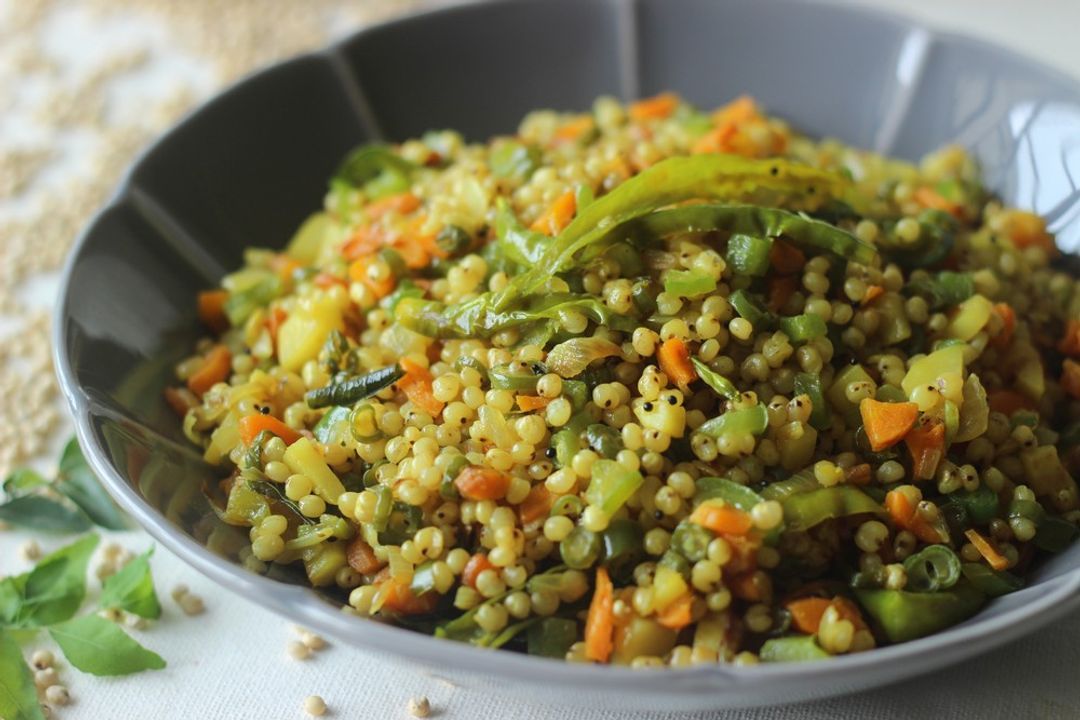Does Quinoa Cause Inflammation? Unravelling the Enigma
Does quinoa cause inflammation? Is quinoa anti-inflammatory? Click here to discover the intricate relationship between quinoa and inflammation.
The longstanding debate surrounding brown rice and its potential to cause inflammation continues to polarise nutrition experts and health enthusiasts alike.
Brown rice, a whole grain that retains its bran and germ layers, is hailed as a superior alternative to white rice, which undergoes a refining process that strips these nutritious components.
While brown rice boasts a higher nutritional profile, including vitamins, minerals and fibre, some claim that it may also contribute to inflammation in the body, raising concerns about its consumption.
This article aims to examine the evidence for and against brown rice as a potential inflammatory agent by analysing its nutritional components and referencing relevant case studies.
Incorporating brown rice into a balanced and varied diet can offer numerous health benefits and contribute to overall wellbeing due to its higher nutritional profile compared to white rice. However, it is essential to consider individual health circumstances and consult with a healthcare professional when making dietary changes.
Some of the key health benefits of brown rice include:
 Brown rice retains its bran and germ layers, which contain vitamins, minerals and fibre. It is a good source of B vitamins, manganese, magnesium, phosphorus and selenium, which play essential roles in energy production, bone health and immune function.
Brown rice retains its bran and germ layers, which contain vitamins, minerals and fibre. It is a good source of B vitamins, manganese, magnesium, phosphorus and selenium, which play essential roles in energy production, bone health and immune function.
The fibre content in brown rice promotes healthy digestion, contributes to regular bowel movements and may help prevent constipation. Studies have shown that a high-fibre diet can reduce the risk of developing colorectal cancer [1].
Brown rice has a lower glycemic index (GI) than white rice, which means it releases glucose more slowly into the bloodstream. This can help maintain stable blood sugar levels, support satiety and aid in weight management. A study by Ye et al. found that a diet high in whole grains, including brown rice, was associated with a reduced  risk of weight gain over time [2].
risk of weight gain over time [2].
Brown rice contains beneficial nutrients, such as magnesium and phenolic compounds, which can help lower blood pressure, reduce inflammation and decrease the risk of cardiovascular disease. A study by Zhang et al. found that higher whole grain intake, including brown rice, was associated with a lower risk of developing heart disease [3].
Brown rice is a rich source of phenolic compounds, such as ferulic acid, which exhibit strong antioxidant and anti-inflammatory properties. These compounds can help combat oxidative stress, a key contributor to chronic inflammation and various diseases, including cancer, cardiovascular disease and diabetes.
A case-control study conducted in Korea reported that higher consumption of whole grains, including brown rice, was associated with lower levels of inflammatory markers, such as C-reactive protein, and a reduced risk of colorectal cancer [4].
The high fibre content of brown rice has been shown to promote gut health by supporting the growth of beneficial bacteria in the colon, which can produce short-chain fatty acids, such as butyrate. Butyrate has been found to have anti-inflammatory effects and can help maintain the integrity of the gut barrier, thus countering the negative effects of lectins.
The low glycemic index and high fibre content of brown rice can help regulate blood sugar levels and may be beneficial for people with type 2 diabetes or those at risk for developing the condition.
A 2010 meta-analysis of the relationship between whole grain intake and the risk of type 2 diabetes found that higher consumption of brown rice was significantly associated with a lower risk of type 2 diabetes compared to white rice [5].
 Neurotransmitter production
Neurotransmitter productionBrown rice contains gamma-aminobutyric acid (GABA), a neurotransmitter with anti-inflammatory effects. A study on mice demonstrated that a diet supplemented with GABA-enriched brown rice reduced inflammation in the colon and alleviated symptoms of colitis, an inflammatory bowel disease [6].
While more research is needed to establish the efficacy of GABA-enriched brown rice in humans, these findings suggest that brown rice may have potential therapeutic applications in managing inflammation-related diseases.
While brown rice offers several health benefits, there are potential risks associated with its consumption. Some of the risks include:
Brown rice contains phytic acid, a natural antioxidant abundant in the bran layer of brown rice and other whole grains. It can bind to essential minerals like iron, zinc and calcium, inhibiting their absorption in the digestive tract.
 This chelating effect has led some to label phytic acid as an 'anti-nutrient', fearing that it may contribute to mineral deficiencies and subsequent inflammation, particularly if a person’s diet is already low in these essential nutrients.
This chelating effect has led some to label phytic acid as an 'anti-nutrient', fearing that it may contribute to mineral deficiencies and subsequent inflammation, particularly if a person’s diet is already low in these essential nutrients.
However, research on the direct relationship between phytic acid consumption and inflammation remains inconclusive.
Brown rice contains lectins, a type of protein that can bind to cell membranes and potentially disrupt gut barrier function. High levels of lectins may contribute to inflammation and increase the risk of 'leaky gut' syndrome in sensitive individuals.
Some studies have also suggested that lectins may contribute to autoimmune diseases and chronic inflammatory conditions, such as rheumatoid arthritis and inflammatory bowel disease [7].
However, it is important to note that the levels of lectins found in brown rice are generally lower than those in other food sources, such as legumes.
 Brown rice can accumulate relatively high levels of inorganic arsenic, a toxic element found in soil and water. Long-term consumption of high-arsenic rice may increase the risk of chronic diseases, such as cancer, heart disease and neurological disorders [8]. However, the risk varies depending on the arsenic levels in the rice, which can be influenced by geographical location and cultivation practices.
Brown rice can accumulate relatively high levels of inorganic arsenic, a toxic element found in soil and water. Long-term consumption of high-arsenic rice may increase the risk of chronic diseases, such as cancer, heart disease and neurological disorders [8]. However, the risk varies depending on the arsenic levels in the rice, which can be influenced by geographical location and cultivation practices.
Although rare, some individuals may have an allergy or sensitivity to rice, including brown rice. Symptoms can include digestive issues, skin rashes or respiratory problems. Those with a known rice allergy should avoid consuming brown rice.
The high fibre content in brown rice may cause digestive discomfort, such as bloating, gas or cramps, in some individuals, especially if they are not accustomed to consuming high-fibre foods.
The link between brown rice and inflammation is complex, as brown rice contains both anti-inflammatory and potentially pro-inflammatory components.
Considering the conflicting evidence surrounding brown rice and inflammation, it is important to acknowledge that individual variability plays a significant role in determining the effects of brown rice consumption. Factors such as genetics, gut microbiota composition and dietary habits can influence how an individual's body responds to brown rice and its components.
 For example, an individual with a predisposition to mineral deficiencies or a diet already low in essential minerals may be more susceptible to the chelating effects of phytic acid, potentially leading to inflammation. In such cases, strategies to reduce the phytic acid content in brown rice, such as soaking, sprouting or fermenting, may be beneficial.
For example, an individual with a predisposition to mineral deficiencies or a diet already low in essential minerals may be more susceptible to the chelating effects of phytic acid, potentially leading to inflammation. In such cases, strategies to reduce the phytic acid content in brown rice, such as soaking, sprouting or fermenting, may be beneficial.
Similarly, individuals with compromised gut health or a predisposition to autoimmune diseases may be more sensitive to the effects of lectins, warranting caution when consuming brown rice and other lectin-rich foods. For these individuals, proper cooking techniques, such as boiling or pressure cooking, can help reduce lectin content and minimise potential adverse effects.
Conversely, individuals with no known predispositions or sensitivities may benefit from the anti-inflammatory and health-promoting properties of brown rice without experiencing adverse effects. In these cases, incorporating brown rice as part of a balanced and varied diet may contribute to overall health and wellbeing.
 If you are looking for anti-inflammatory grain alternatives to complement or replace brown rice in your diet, the following options offer a diverse range of nutritional benefits and health-promoting compounds:
If you are looking for anti-inflammatory grain alternatives to complement or replace brown rice in your diet, the following options offer a diverse range of nutritional benefits and health-promoting compounds:
Quinoa: A gluten-free pseudo-cereal, quinoa is rich in fibre, protein and essential amino acids. It also contains anti-inflammatory compounds, such as flavonoids, and various vitamins and minerals that support overall health.
Barley: This whole grain is an excellent source of fibre, particularly beta-glucan, which has been shown to have anti-inflammatory effects. Barley is also a good source of vitamins, minerals and antioxidants.
Oats: Oats are known for their heart-healthy benefits, largely due to their high content of beta-glucan fibre. They also contain avenanthramides, which are antioxidant and anti-inflammatory compounds unique to oats.
Buckwheat: Another gluten-free pseudo-cereal, buckwheat is high in fibre, protein and minerals like magnesium, which has been shown to help reduce inflammation. It also contains rutin, a flavonoid with antioxidant and anti-inflammatory properties.
 Millet: This gluten-free whole grain is a good source of fibre, protein and various minerals. Millet contains polyphenols and other anti-inflammatory compounds that can contribute to overall health.
Millet: This gluten-free whole grain is a good source of fibre, protein and various minerals. Millet contains polyphenols and other anti-inflammatory compounds that can contribute to overall health.
Teff: Originating from Ethiopia, teff is a gluten-free grain rich in protein, fibre and essential nutrients. It contains various anti-inflammatory compounds, including phenolic compounds, that may benefit overall health.
Bulgur: Made from cracked wheat, bulgur is high in fibre, protein and minerals. It also contains antioxidants and other anti-inflammatory compounds that can promote overall health.
Farro: An ancient grain, farro is rich in fibre, protein and essential nutrients, including B vitamins and minerals. It also contains lignans and other anti-inflammatory compounds.
Sorghum: A gluten-free grain, sorghum is high in fibre, protein and essential nutrients. It contains various antioxidants, such as phenolic compounds, that can help reduce inflammation.
Amaranth: Another gluten-free pseudo-cereal, amaranth is rich in protein, fibre and essential nutrients, including magnesium, which has anti-inflammatory properties.
The relationship between brown rice and inflammation is complex and subject to individual circumstances.
While some components of brown rice, such as phytic acid and lectins, have been associated with inflammation, there is also substantial evidence highlighting the grain's anti-inflammatory properties, such as its fibre, phenolic compounds and GABA content.
Factors such as genetics, gut health and dietary habits play a crucial role in determining an individual's response to brown rice consumption.
To maximise the benefits of brown rice and minimise potential risks, individuals should consider their unique health circumstances and consult with a healthcare professional, and employ appropriate preparation techniques, such as soaking, sprouting, fermenting or cooking, to reduce phytic acid and lectin content.
As part of a balanced and varied diet, brown rice can offer numerous health benefits and contribute to overall wellbeing.
 An additional consideration for individuals seeking to monitor their overall health and inflammation levels is the GlycanAge biological age test. GlycanAge is a test that measures a person's biological age based on the glycan composition of their immunoglobulin G (IgG) antibodies.
An additional consideration for individuals seeking to monitor their overall health and inflammation levels is the GlycanAge biological age test. GlycanAge is a test that measures a person's biological age based on the glycan composition of their immunoglobulin G (IgG) antibodies.
This test can provide insights into an individual's overall health and how their lifestyle choices, such as diet and exercise, may be affecting their ageing process. Benefits include gaining personalised health insights, identifying areas where lifestyle changes may be beneficial and the ability to track the impact of such interventions over time.
Once you’ve ordered your home testing kit, all you need to do is to provide a small blood sample and mail it back to the lab for analysis. It’ll take 3-5 weeks to complete comprehensive tests and return a personalised report on your results.
You will also receive complimentary 1-1 consultations with a scientist and/or healthcare professional to understand your results and make a plan to improve your overall wellness as you get older.
With various price points and payment plans available, there is an option to suit each person who wants an accurate, reliable and affordable way to determine their health state. Start your wellness journey today by ordering your GlycanAge home testing kit.
https://www.bmj.com/content/343/bmj.d6617
https://academic.oup.com/jn/article/142/7/1304/4743493?login=false
https://www.nature.com/articles/ejcn2017149
https://www.ncbi.nlm.nih.gov/pmc/articles/PMC4998300/
https://jamanetwork.com/journals/jamainternalmedicine/article-abstract/416025
https://scholar.google.co.uk/scholar?hl=en&as_sdt=0%2C5&q=Gamma-aminobutyric+acid+%28GABA%29+suppresses+antigen-specific+immune+responses+and+T+cell+activation+in+mice&btnG=
https://bant.org.uk/wp-content/uploads/2015/11/Alternative%20_Therapies_Special_Issue_Deluxe.pdf#page=44
https://ehp.niehs.nih.gov/doi/full/10.1289/ehp.1205875

Start or continue your GlycanAge journey
Don’t be afraid to reach out to us and ask questions, provide commentary or suggest topics.
Other articles you may like:
Does quinoa cause inflammation? Is quinoa anti-inflammatory? Click here to discover the intricate relationship between quinoa and inflammation.
Can you get inflammation after eating pasta? Is pasta anti-inflammatory? Find out here if pasta is an inflammation-causing food.